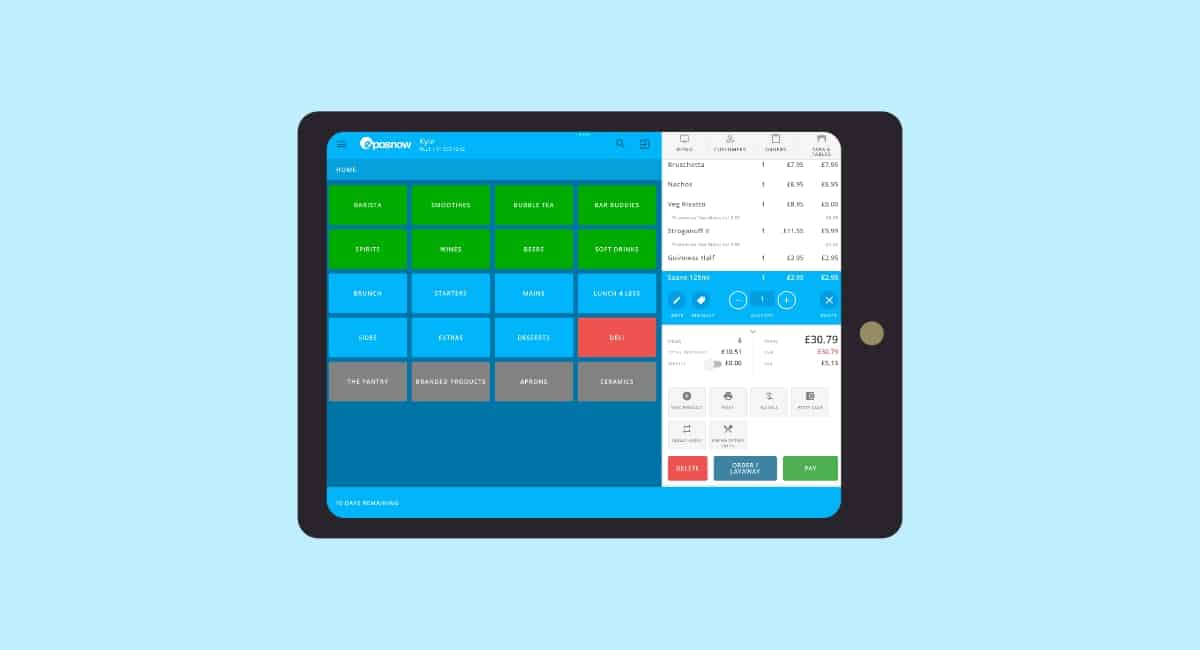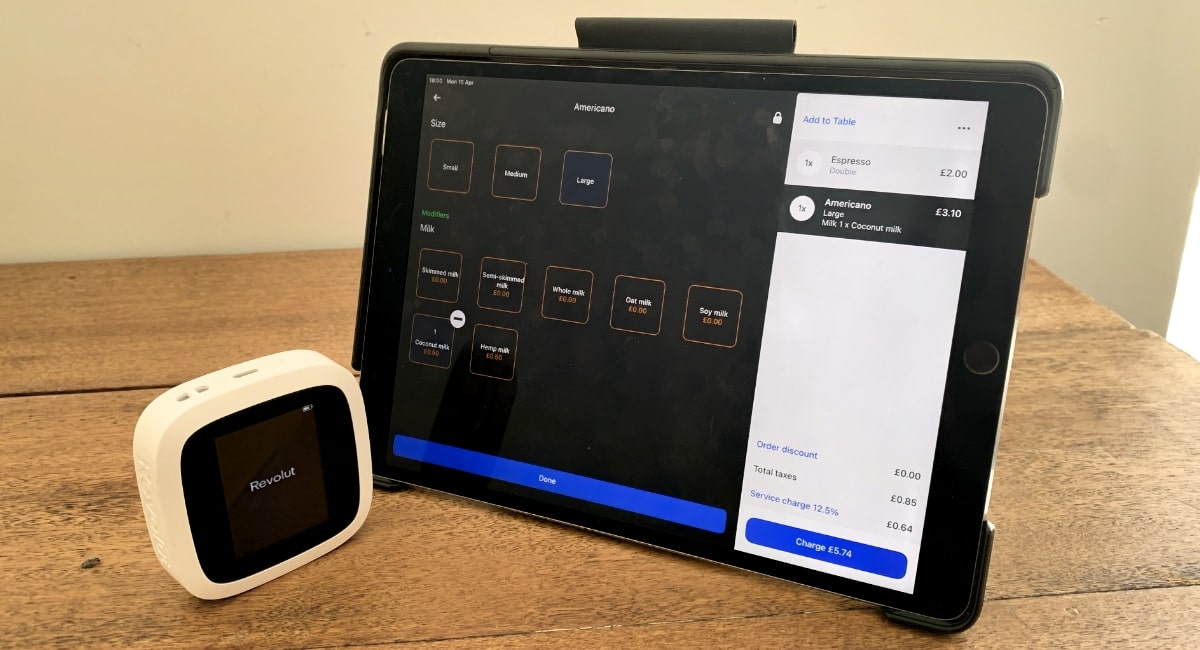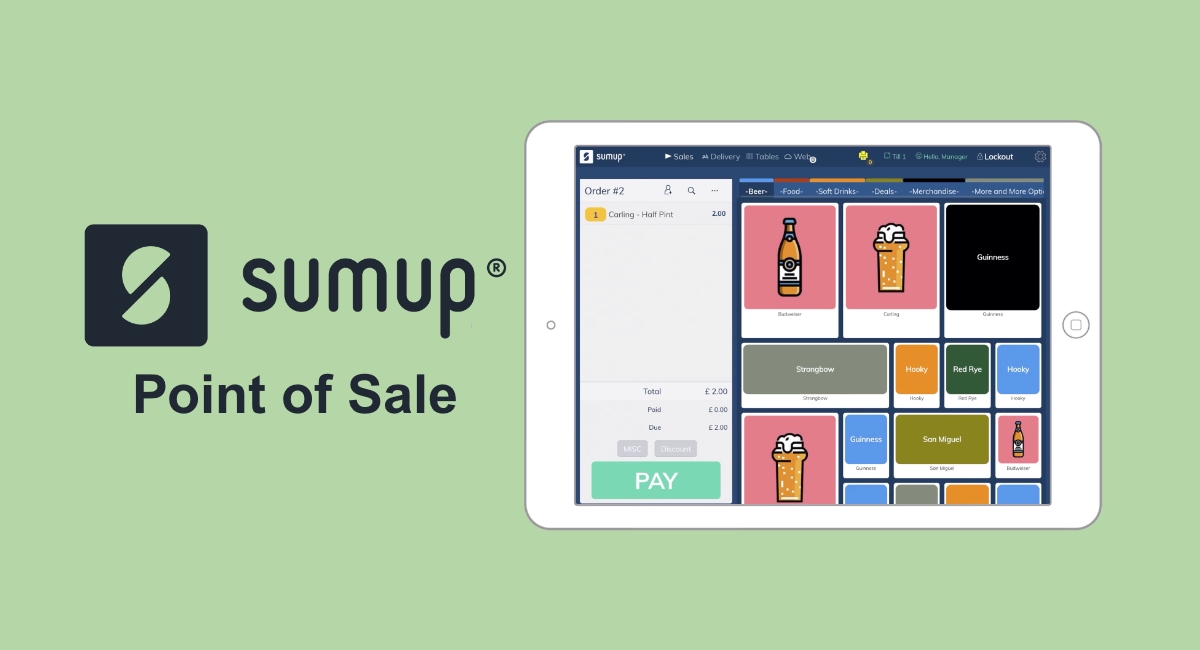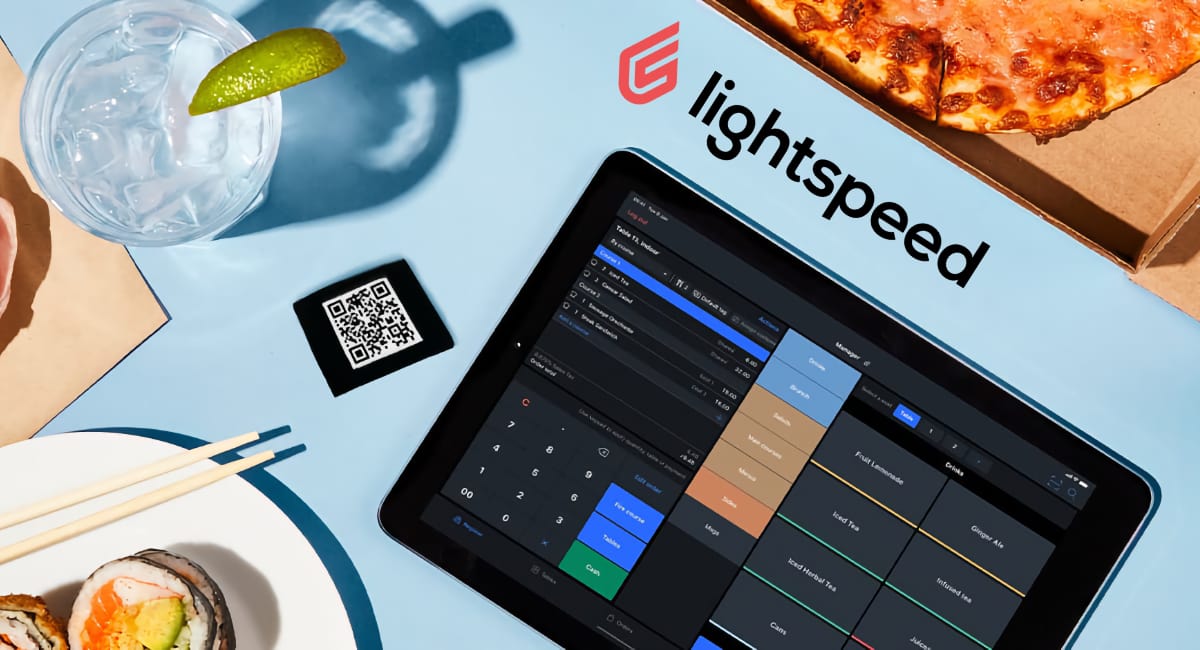What is Epos Now?
As a modular electronic point of sale (EPOS) system, Epos Now lets merchants pick their till equipment and software package to suit their size and type of business. The solution is available not just in the UK, but also in Ireland and many other countries.
The core of the product is the POS software, which can be purchased or paid for monthly. It works in the cloud (online) with some features available offline.
You also choose between Hospitality or Retail EPOS that works on either iPad, Android or Windows devices. If you don’t have a touchscreen device, Epos Now offers a sturdy PC touchscreen built for busy use at a till alongside other checkout accessories in the package. It was previously possible to use the till screen in computer browsers, but Epos Now has started to require that you download an app.
What about payments? The solution uses Epos Now Payments for a fixed rate per transaction, unless you integrate with an external processor.
In other words, you get the whole package with Epos Now – if you can afford it and can commit to at least a year. Is it worth it? Let’s have a look at the product in detail.
Costs and fees
There’s no fixed pricing for Epos Now, only a tailored package with upfront and monthly costs depending on your preferred features.
What we can say is there’s no software plan below £50 monthly that is likely to meet all your needs. Customer support requires a £25 per month add-on on top of any EPOS plan. You are otherwise left to your own devices if issues occur or you need support.
| Epos Now fees | |
|---|---|
| Contract lock-in | 1 month – 3 years |
| POS software subscription | From £50 + VAT/month |
| Add-on feature modules | From £14 + VAT/month per add-on |
| Hardware bundles | From £399 + VAT Shipping from £9.99 + VAT |
| Epos Now Payments | 1.7% per transaction (all cards) Refunds are free to process |
Hardware packages normally start from £399 + VAT upfront, but they are sometimes on offer for less than £100. You can choose packages with a checkout touchscreen, cash drawer, receipt printer and accessories relevant to your industry. Just beware that the hardware offers usually come with a longer contract than if you paid full price, e.g. 2 years’ lock-in instead of 1 year.
If you opt for Epos Now’s own card machines and payment system, you pay a fixed 1.7% per transaction for any card accepted, if you agree to 24 months’ commitment. Customer refunds are free to process through this system, and custom rates are available through negotiation.
See also: Compare POS systems for food and drink
Checkout interface
Perhaps the most important aspect of a till is the checkout interface.
Epos Now opts for a standard screen layout with a product overview on the left and tab on the right. Products can be hierarchically organised into categories like Brunch, Mains or Soft Drinks. Each food item has room for modifiers, notes and discounts, and every tab can be allocated to a table, customer or order.
Image: Mobile Transaction
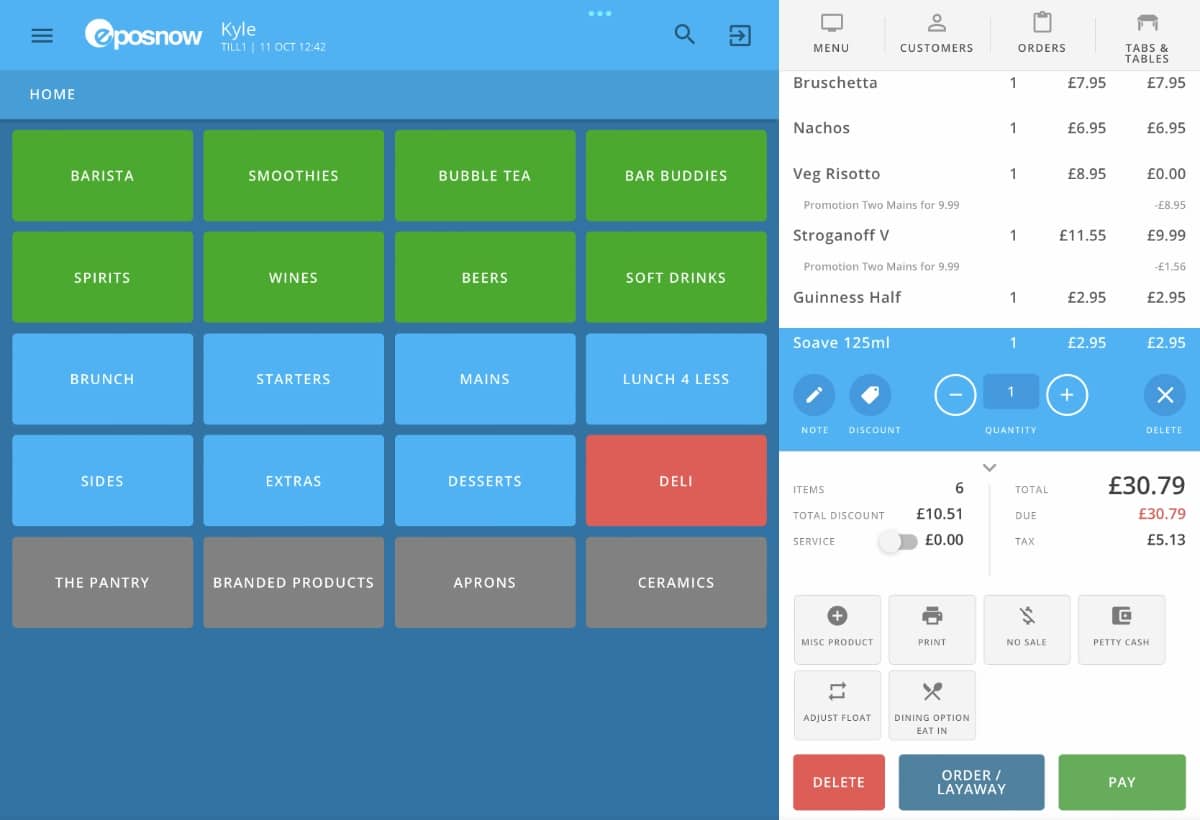
The interface has a universally understood layout, with some button text almost too small to read.
We tested the software on iPad, where it is a bit slow to load when navigating between settings and the frontend till interface. Since our first test a year ago, the app has become quicker.
The master login screen used to have a small chat popup that felt like a nuisance (like the Epos Now website which has chronic popup offers and chats appearing on every page), but after passing this hurdle, a list of user accounts allows staff to log in with a PIN. The till screen itself is free of clutter and impromptu popups.
Image: Mobile Transaction
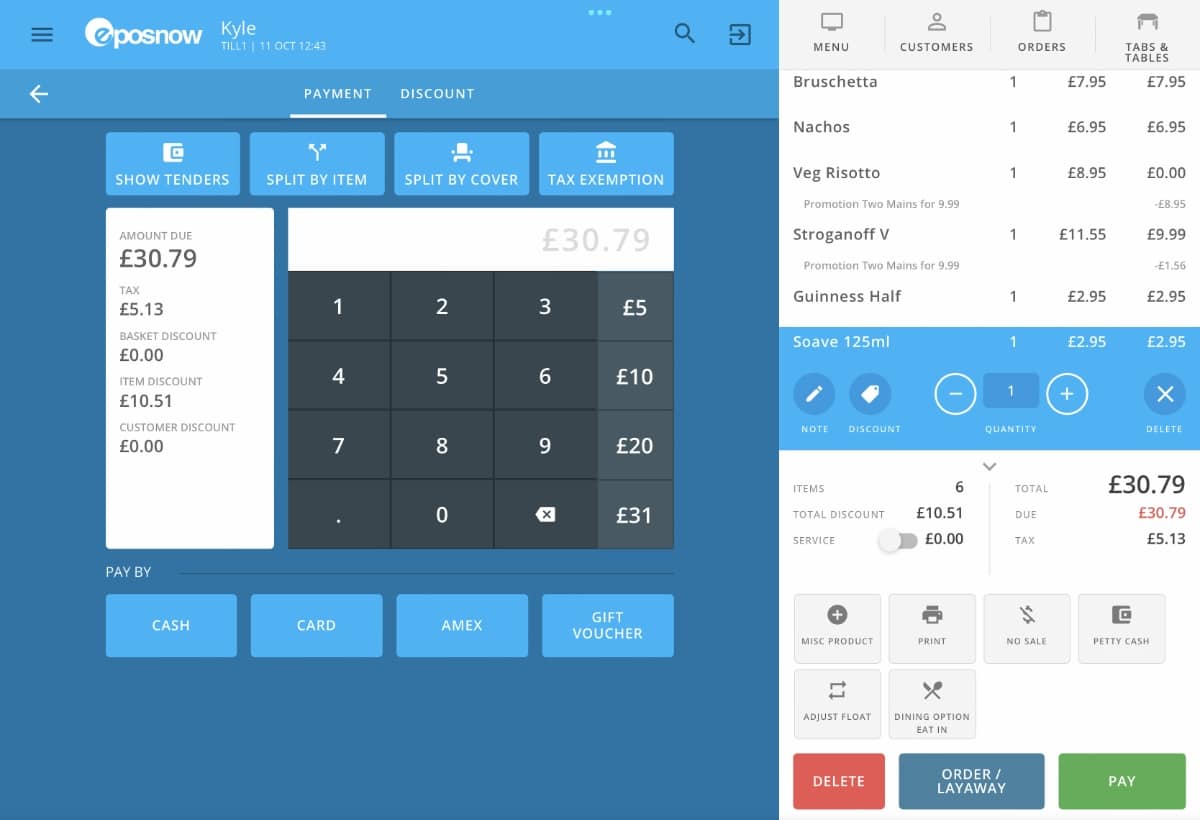
The payment methods as shown in the Epos Now app.
Within the app, you can adjust a few workflow settings like whether you must select a tab or table to create a new order. Setting up the inventory library, categories, staff, table plan etc. is done in the backend Back Office account accessible through the app or in a web browser on a computer, where it may be easier to type.
Unfortunately, we could’t increase the font size of important buttons in the till app. This is a major accessibility downside, since more than a few buttons and information text are written in very small fonts that people with poor vision would struggle to read.
On a tablet, the Back Office occasionally leads you to pages where you can’t return to the main Back Office account, e.g. when going to the Web Store to order accessories like barcode labels or a terminal stand. You might also have to exit the app completely and reenter to get any further, if landing on an error page.
Once or twice a month, Epos Now releases new app updates with software improvements and new feature launches. This is great for incremental improvements, but not for technical glitches and certain usability problems preventing some users from enjoying the system in the here-and-now.
POS features
Two main point of sale (POS) apps are presented on the website: Epos Now Retail or Hospitality.
As the names imply, features are tailored to the industries retail or food and drink, but they are not actually two different EPOS systems – they’re the same general till software plus features for each industry, which may include add-on modules that increase the monthly cost.
Some packages are overtly geared towards pharmacists, car washes, takeaways and others, but when you try the software, you see they are essentially the same system with additional apps supporting your specific needs. This is very different from competing retail- and hospitality-focused EPOS systems where the whole experience of the software is designed specifically for one sector.
Some of the general, included features relevant to most businesses are:
- Till screen with a grid layout showing categories and products to add to the bill
- Payment methods including cards, cash, gift vouchers and custom tenders
- Petty cash, no sale, tipping and refund functions
- Discounts and promotions
- Different VAT rates
- Multi-location management
- Pop-up alerts on the till screen
- Custom end-of-day reports
The Hospitality package includes customisable table plans with seating, menus and courses, modifiers and optional add-ons like a Kitchen Display System (KDS) and a Order & Pay system for table-side ordering. You can request a handheld smart POS terminal for taking orders on the floor, connected to the till system.
Image: Mobile Transaction
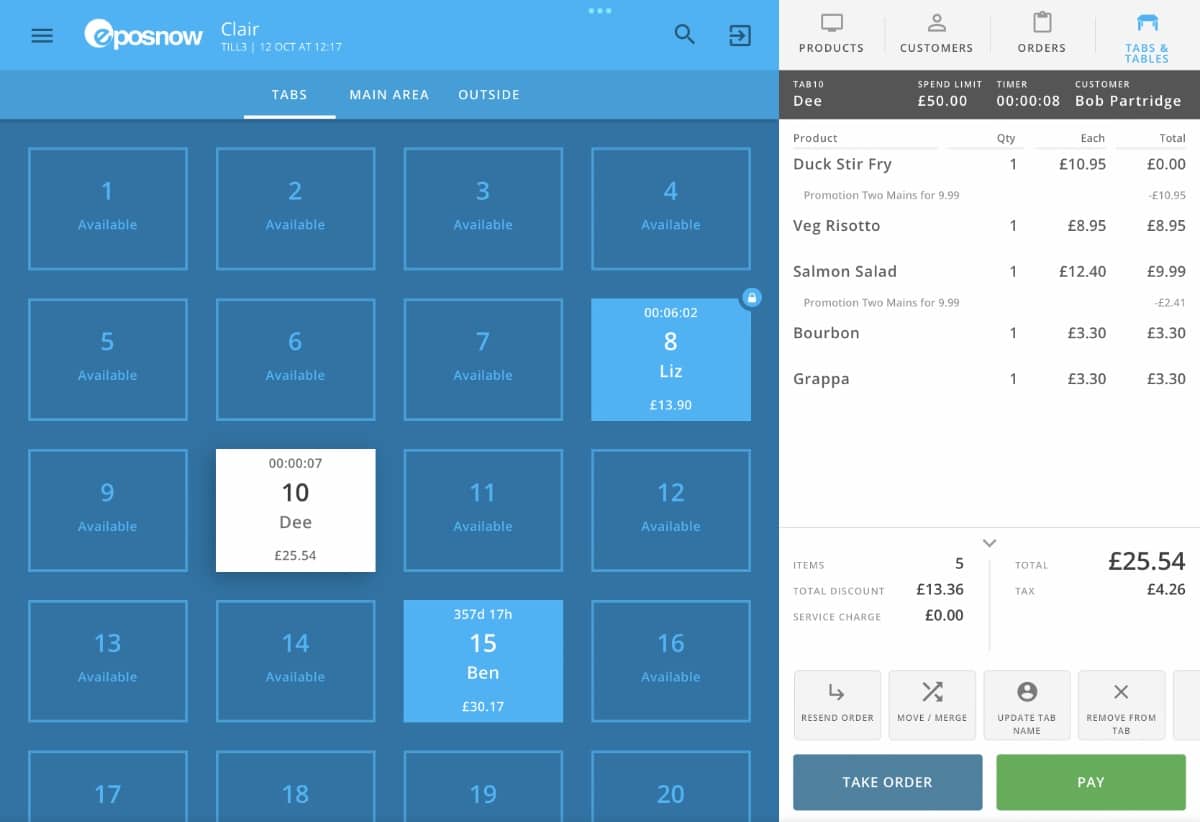
The app has a visual overview of open tabs showing table numbers and order details.
The Retail package lets you put unlimited products into orderly categories, track inventory counts and receive stock alerts when running low. Importing products from a spreadsheet requires an add-on, as would an integration with your online store if selling online.
Image: Mobile Transaction

Epos Now’s Back Office, product management section.
Whatever your package, the till system works on your preferred tablet system (not conventional computers) both online and offline – though not all features can function offline.
The PC touchscreen offered in Epos Now’s hardware package is the best option for food-and-drink locations, since it is built for dirty, busy environments. It has a slot on the side for swiping staff ID cards, which can’t be said of commercial tablets.
Card machines and POS equipment
In the UK, Epos Now users have the option to integrate with card machines from Paymentsense, Global Payments, Zettle by PayPal, Retail Merchant Services (RMS), Worldpay and Verifone.
Alternatively, you can opt for Epos Now Payments through a card machine that Epos Now rents out for a minimum of £15 + VAT per month. This is similar to terminal rental costs of other merchant service providers. You can take a pick between two terminals:
- “Link” card machine: Verifone P400 model with a physical PIN pad, linked (Ethernet or WiFi) to your till. This is 3 times faster at processing card payments than a standalone card terminal.
- “Pro” terminals: Standalone, handheld smart POS terminals (wireless via 4G or WiFi) with a large touchscreen that includes portable POS software and card payments. With a long-life battery.
There is also a fixed rate of 1.7% for all card machine transactions, whether the transaction was paid with a Visa, Mastercard, American Express, Discover, UnionPay or JCB card from the UK or abroad. Contactless Apple Pay, Google Pay and Samsung Pay are also accepted. Those with a high enough card turnover can get custom rates that work out cheaper than the fixed rate.
Epos Now Capital a possible financing option
Users who have been accepting any card payments through the Epos Now system can apply for a cash advance between £1,000 and £1 million. Eligibility and amount offered depend on your card turnover history that has to be above £1,500 per month over the last 3 months at least.
Subject to approval, the cash advance is provided within 48 hours and repaid through an agreed percentage of your card payments accepted online, through Epos Now Payments or via another card machine integration in Epos Now. For example, 20% may be your repayment rate deducted from every card transaction on a pay-as-you-go basis.
Integrations
Not only can Epos Now adapt to many types of businesses, it also integrates with external software for tools beyond the point of sale.
This includes software for:
- Accounting (e.g. QuickBooks, Sage, Xero)
- Business management (e.g. Microsoft Dynamics, Zapier)
- Customer loyalty (e.g. LoyaltyDog, VoucherCart)
- Ecommerce (e.g. BigCommerce, Shopify)
- Food delivery (e.g. Deliverect, Mr Yum)
- Marketing (e.g. MailChimp, Facebook Shops)
- Scheduling (e.g. Appointedd Online Booking)
- Staff management (e.g. Deputy, Workforce.com)
Many of the app options are built by Epos Now, proving the platform is versatile on its own – if you don’t mind downloading and possibly paying extra per app. Some users have pointed out that even features regarded as essential are not by default included in the EPOS system, so you have to download the app for it.
For example, you have to get a Bulk Import app to bulk-import inventory in a CSV spreadsheet. This app is free only during the Epos Now trial period, after which you are charged £15 per month for it.
Image: Mobile Transaction
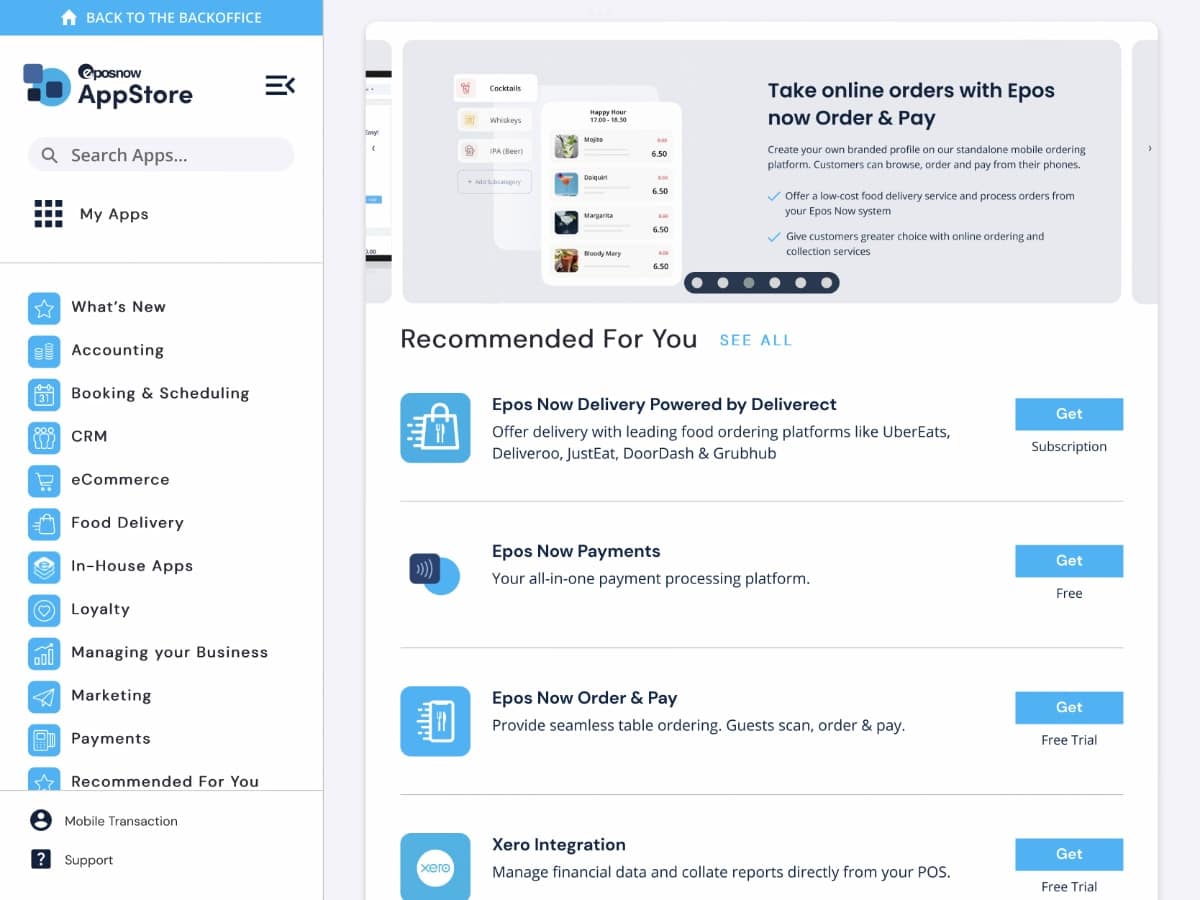
Epos Now integrations.
There are specialised software options for industries like hotels, tanning salons and chemists, but options are not extensive so you should check with Epos Now for particular needs requiring a certain integration.
Customer service and reviews
The availability and quality of customer support at Epos Now depends a lot on whether you have the Support add-on module for £25 + VAT per month. Without it, you only get basic onboarding help and email support when required.
The Support module includes telephone support that’s prioritised (compared with the free email support), unlimited training and help with onboarding, monthly new software features, and next-day faulty terminal replacement that may incur a £75 + VAT excess fee.
We’ve seen a mixed bag of Epos Now reviews, which usually means they’re neither excellent nor terrible. Many customers have talked about a poor or messy service, lack of communication, delayed delivery of equipment and difficulties or cost of cancelling. Several people also talk about the software being slow and not intuitive to use, which we can confirm to a large extent.
There’s an online Support Centre accessed through the Back Office, but it is very incomplete and hard to navigate. On iPad, the top navigation menu isn’t responsive, and there was no way to go back after viewing a help page, so you just have to leave the app and start all over again to view another page.
On the whole, the help pages do not cover many issues, so you end up being forced to contact Epos Now anyway if your question isn’t answered.
Our verdict
Epos Now is a well-rounded POS system covering all the features needed by most small-to-medium-sized businesses in need of a till system.
It benefits from being an “all-in-one” platform with built-in payments and hardware packages (both optional), but is easily expandable with additional software integrations or add-on apps built by Epos Now.
A newly started business might need to consider the long-term cost and contract of the packages, though. While the startup cost initially appears low, you can end up committing to several years’ subscriptions, possibly with the need to add on features that each have additional costs.
| Epos Now criteria | Rating | Conclusion |
|---|---|---|
| Product | 4 | Good |
| Costs and fees | 3.7 | Passable/Good |
| Transparency and sign-up | 3.2 | Passable |
| Value-added services | 4.2 | Good |
| Service and reviews | 3.5 | Passable/Good |
| Contract | 2.7 | Bad/Passable |
| OVERALL SCORE | 3.7 | Passable/Good |
| Epos Now criteria |
Rating | Conclusion |
|---|---|---|
| Product | 4 | Good |
| Costs and fees | 3.7 | Passable/Good |
| Transparency and sign-up | 3.2 | Passable |
| Value-added services | 4.2 | Good |
| Service and reviews | 3.5 | Passable/Good |
| Contract | 2.7 | Bad/Passable |
| OVERALL SCORE | 3.7 | Passable/Good |
The customer support of the company is not great unless you subscribe to the paid service module, in contrast with most other POS systems that include full support for all subscribers.
The till software is pretty standard, but sufficiently adaptable for restaurants, retailers and specialist businesses that sell in person. It can be a bit slow and less user-friendly at times, but the amount of back office features and customisation options show that it’s serious about business.
Despite the shortcomings, we’ve seen a real interest in Epos Now from small hospitality and mixed businesses such as pubs with accommodation or retailers with a food-and-drink section. The versatility of the EPOS, custom hardware packages and many integrations seem to all help towards the success of the product.

